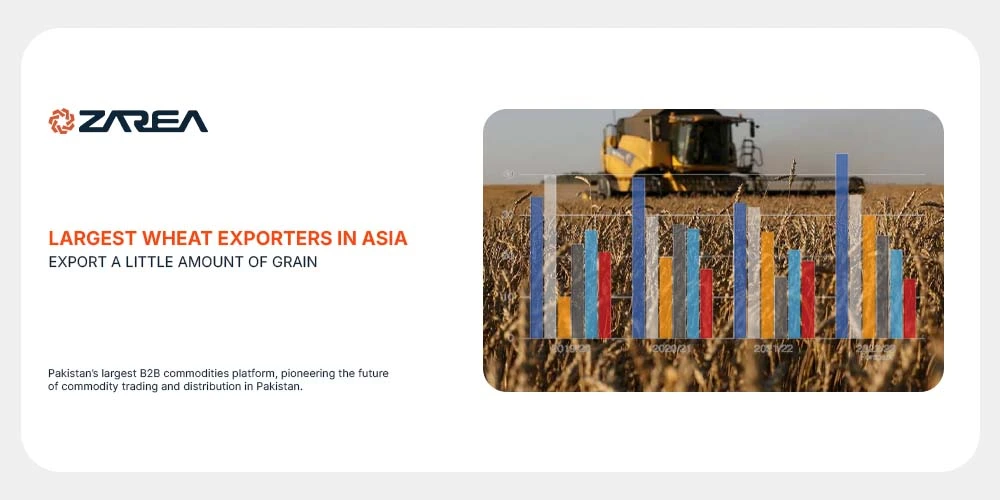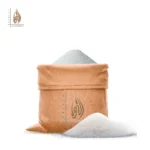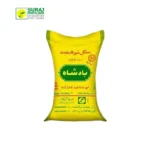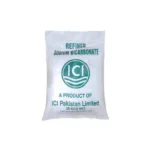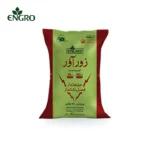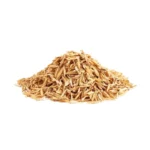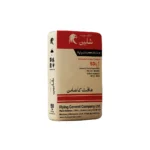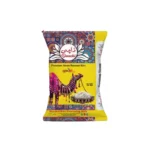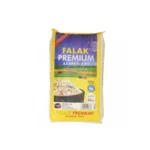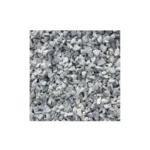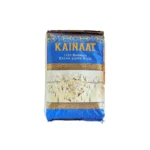Introduction – Largest Wheat Exporters:
As we know wheat effectively occupies an important place in the worldwide agricultural landscape. This is because it’s an essential staple crop and a significant trade commodity. Meanwhile wheat is an essential part of exporting economies and food security in the agriculturally diverse areas of Asia. Moreover, some nations have a disproportionate amount of production and export capability, like Pakistan. Other countries play distinct roles in wheat exports. That’s why they influence market infrastructure, internal demands, and climate variability.
In this article, we’ll explore the largest wheat exporters in Asia, examine why Pakistan exports only a small amount of wheat, and highlight how platforms like Zarea are improving procurement transparency and distribution within Pakistan’s agricultural ecosystem.
Overview – Wheat Export Dynamics in Asia:
Asia is home to both major wheat producers and net wheat importers. Export levels across the region vary significantly, depending on:
- Domestic consumption needs
- Policy frameworks
- Yield outcomes
- Global market conditions
The largest wheat exporters in Asia include:
Kazakhstan
Kazakhstan, renowned for its substantial export quantities and superior grain quality, is the leading wheat exporter in Central Asia. Afghanistan, Uzbekistan, and even certain regions of South Asia receive a large portion of its wheat.
India
India is one of the leading producers of wheat worldwide. However, because the majority of its supply is often consumed domestically, it only exports in significant quantities during years with bountiful harvests. Indian wheat exports, when permitted, are sold in the Middle East, Africa, and Asia.
China
China uses almost all of the wheat it produces domestically, although producing more than any other nation in the world. It usually only sells modest amounts to regional partners and has a minimal impact on wheat exports worldwide.
Turkey (a country in Asia & Europe)
Turkey is a major exporter of wheat flour except raw wheat. It is a vital supplier to the North African and Middle East markets just because of its ideal location.
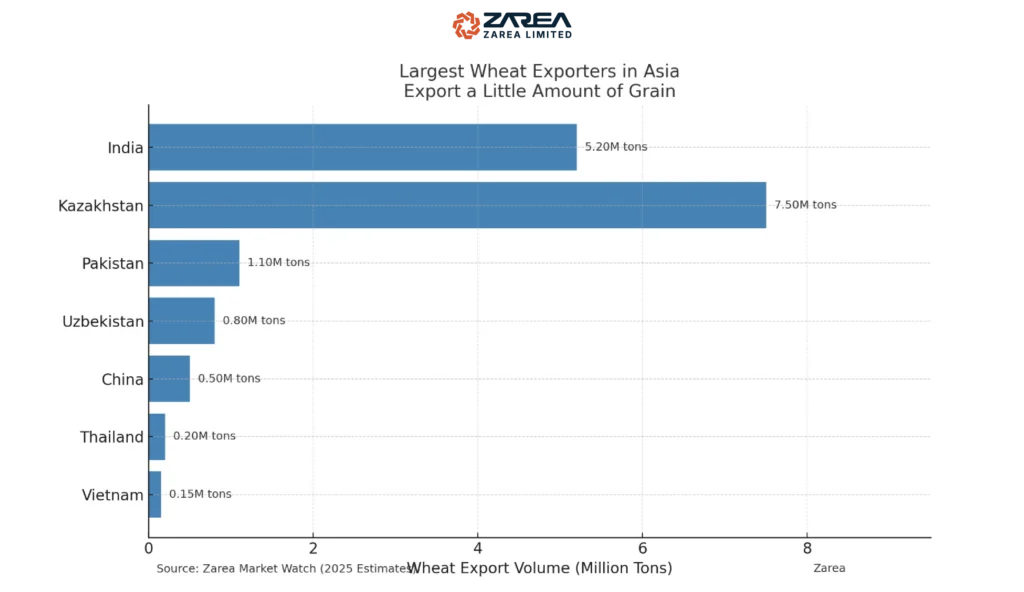
The Reasons Behind Pakistan’s Limited Wheat Exports:
Pakistan is one of the world’s top 10 producers of wheat, yet it exports very little of it. This is the reason:
Demand at Home Exceeds Supply
Pakistan places a higher priority on internal consumption than exports. This is because of its expanding population and especially because of its rising food demand. Wheat’s importance to food security makes it a politically sensitive crop.
Unreliable Surpluses
Irrigation and weather patterns heavily affect Pakistan’s wheat output. In Pakistan droughts, floods, or climatic changes frequently impact wheat’s yield. As it also renders surpluses unpredictable for regular export planning.
Policy Limitations
Further restricting the nation’s involvement in global markets, the government sometimes imposes export prohibitions or hefty taxes on wheat exports in an effort to control inflation and guarantee the supply of flour for the domestic market.
The supply chain’s inefficiencies
Pakistan finds it challenging to establish a strong wheat export industry due to structural inefficiencies, which range from post-harvest losses to irregular storage and transportation.
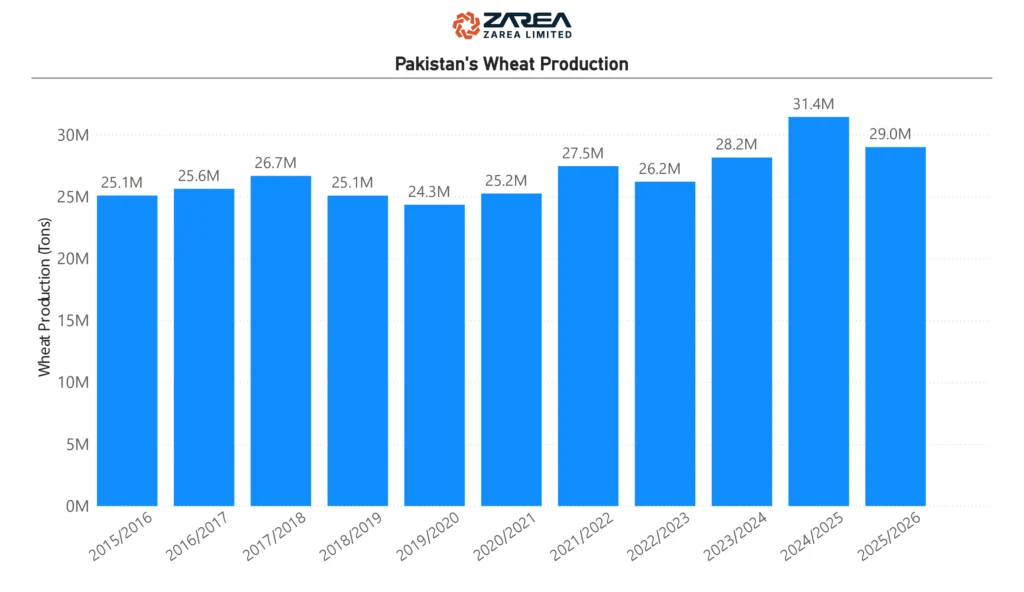
The Function of Zarea in Enhancing the Infrastructure for Wheat Trade:
Zarea is essential in simplifying pricing, procurement, and transparency in the regional commodities markets as Pakistan seeks to modernise its agriculture industry.
How Zarea Helps the Wheat Industry in Pakistan:
- Market Transparency: Zarea helps buyers and sellers make educated decisions by offering real-time commodity prices.
- Reliable Distribution Channels: Zarea minimises middleman inefficiencies, enhances traceability, and cuts down on delays by digitising procurement and logistics.
- Data-Driven Insights: Zarea helps merchants and distributors to maximise their purchasing strategies by using seasonal price patterns and demand predictions.
- Empowering Producers and Distributors: By bridging the gap between production and regional demand centres, small-scale farmers and distributors are able to access a larger market.
The Way Ahead:
Pakistan is appropriately concentrating on food security at home right now, but supply chain modernisation, yield enhancement, and policy change might unlock unrealised export potential.
In addition to ensuring domestic stability, Pakistan may progressively set itself up for more organised involvement in Asia’s wheat export market via climate-smart agriculture, improved storage, and online platforms like Zarea.

